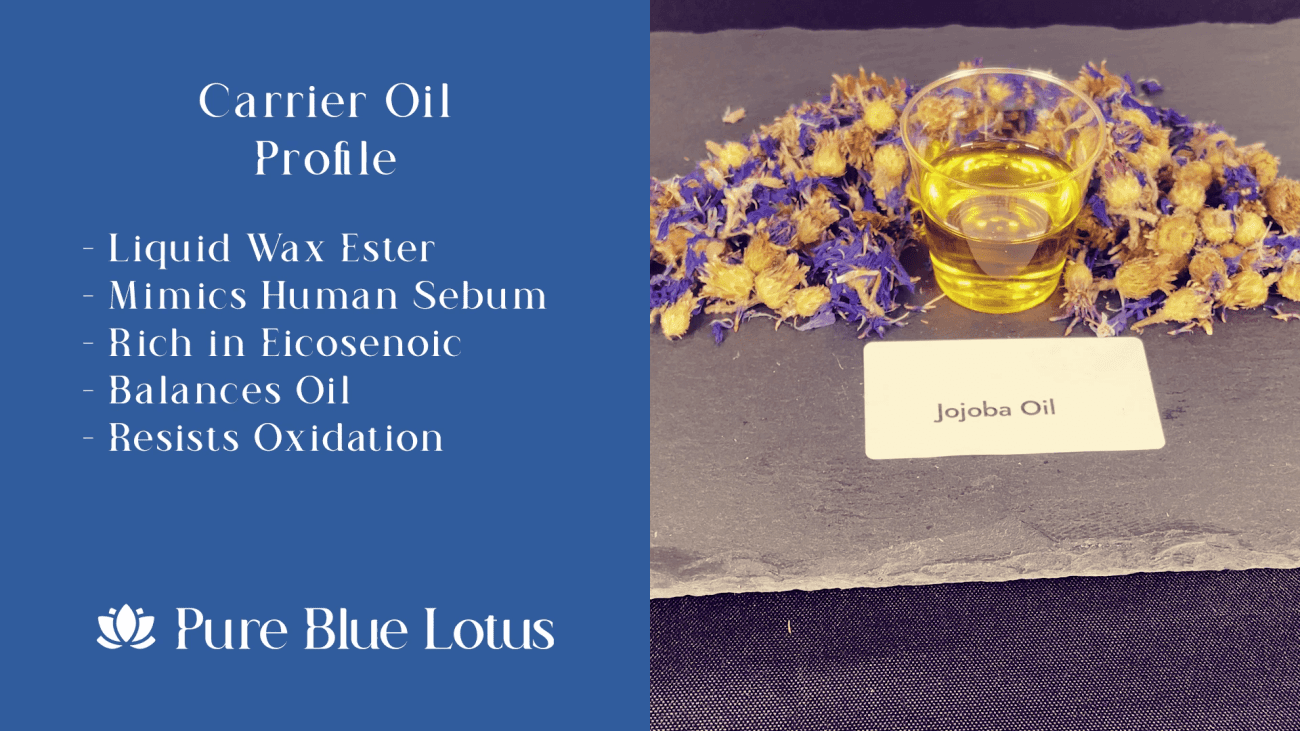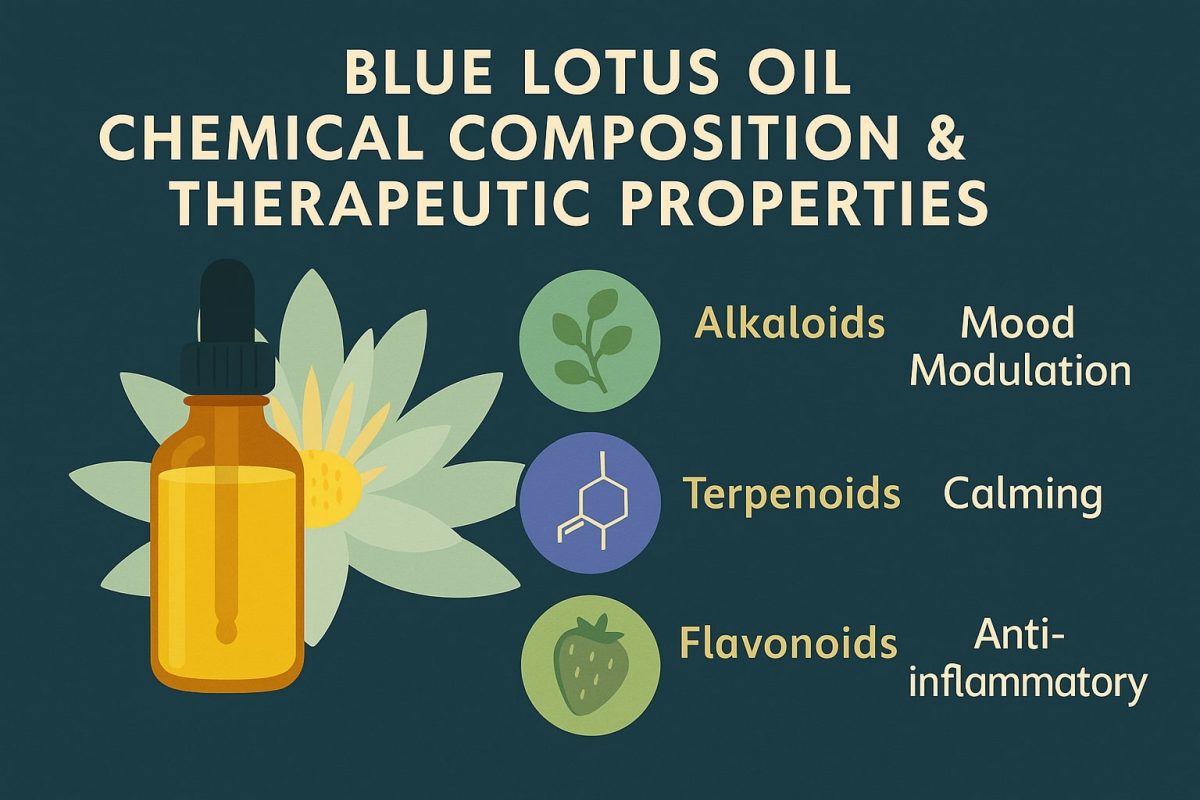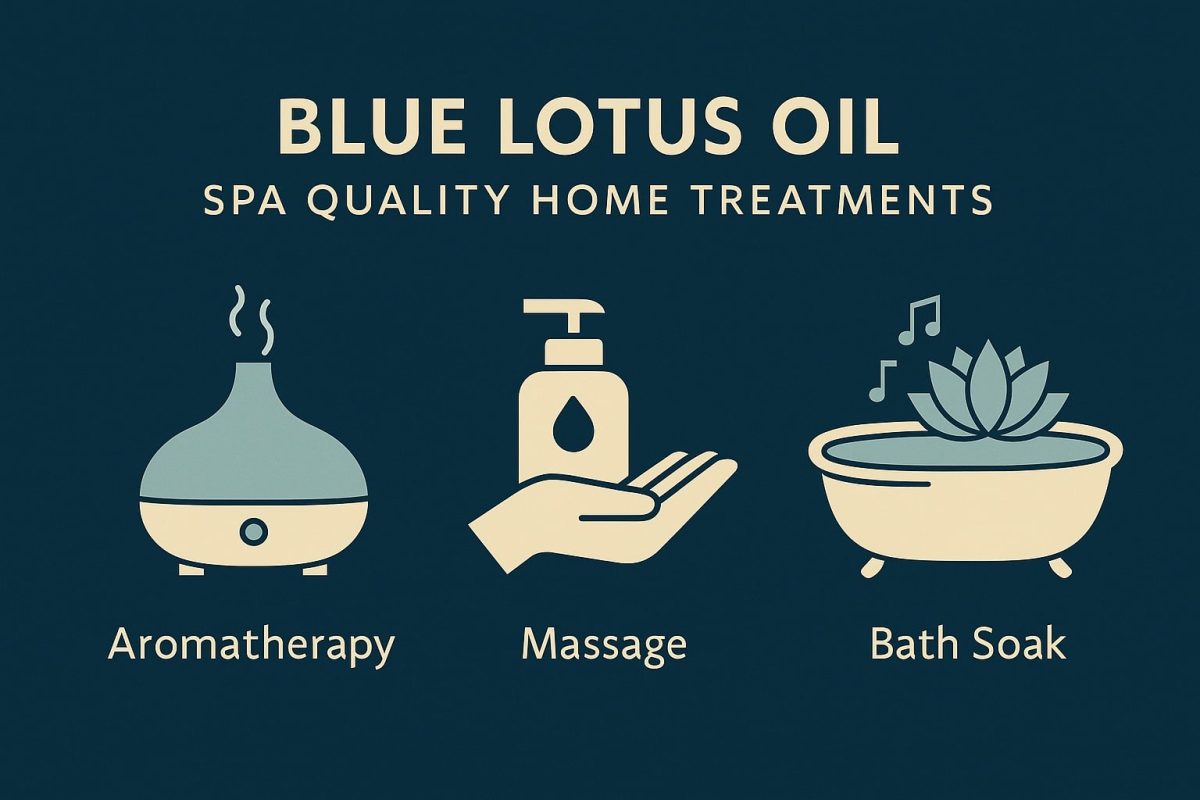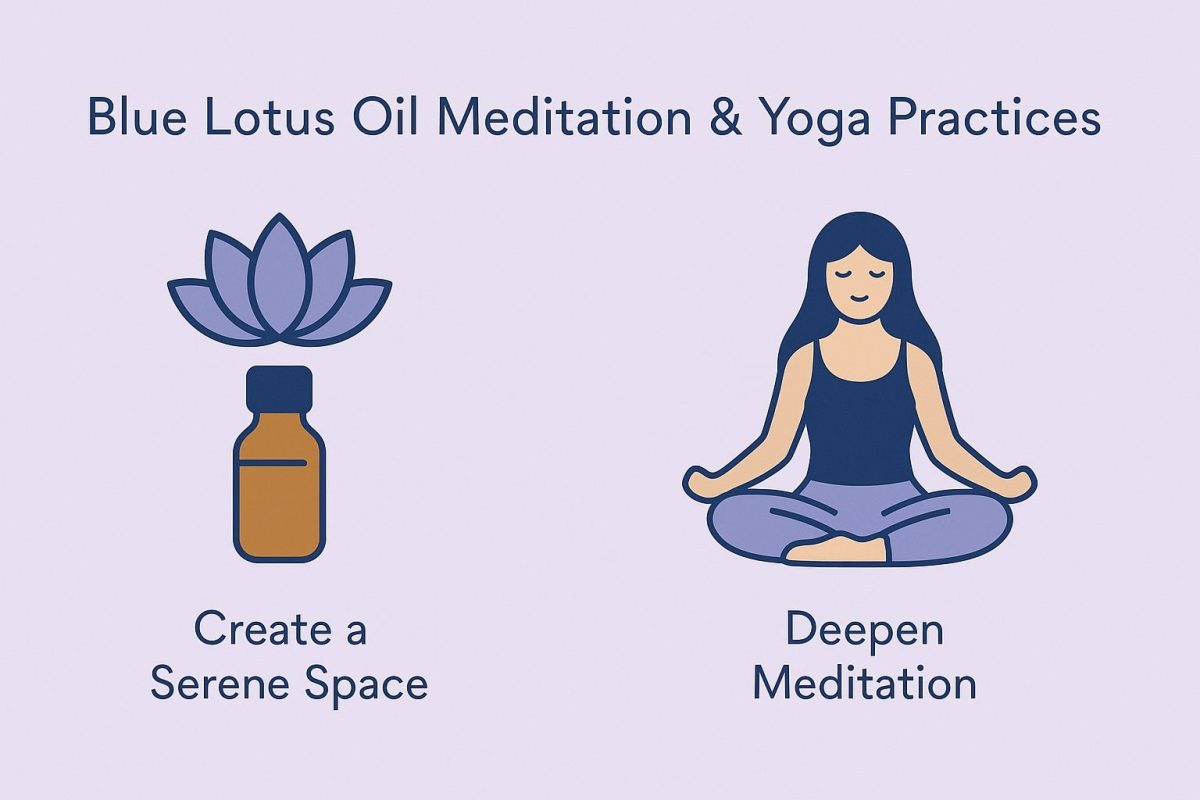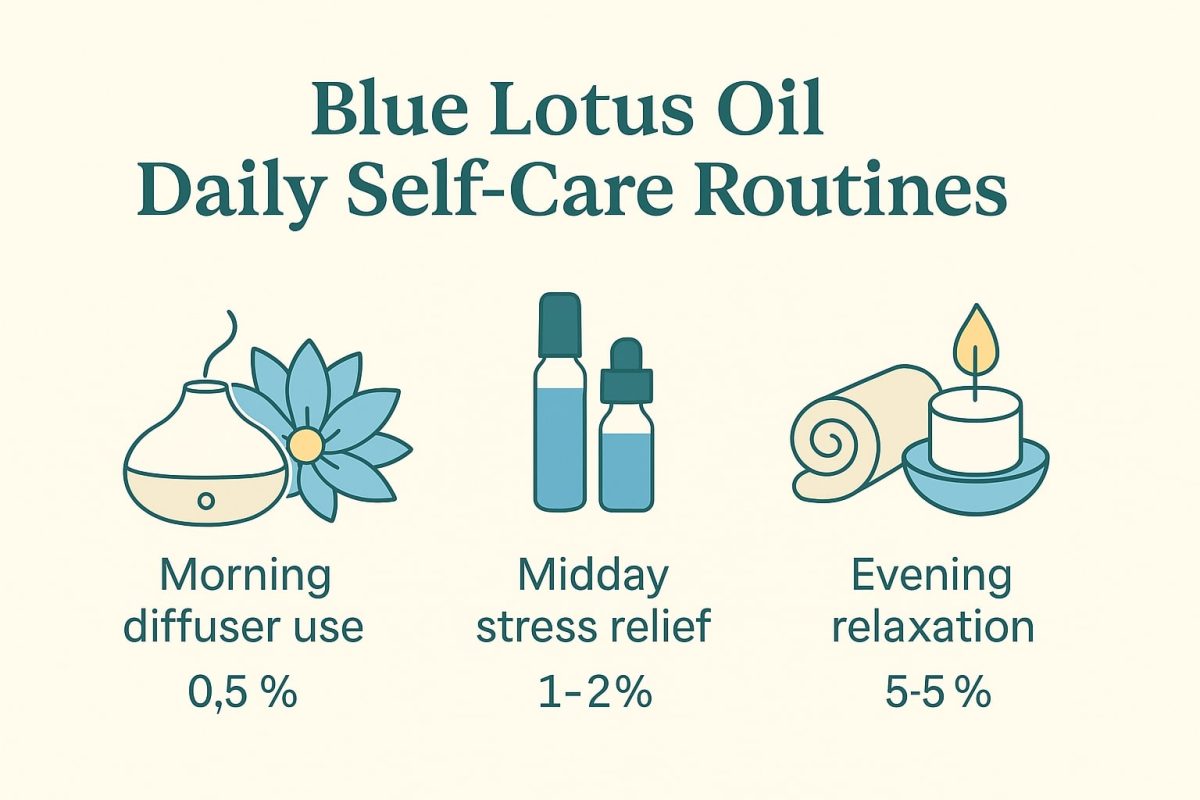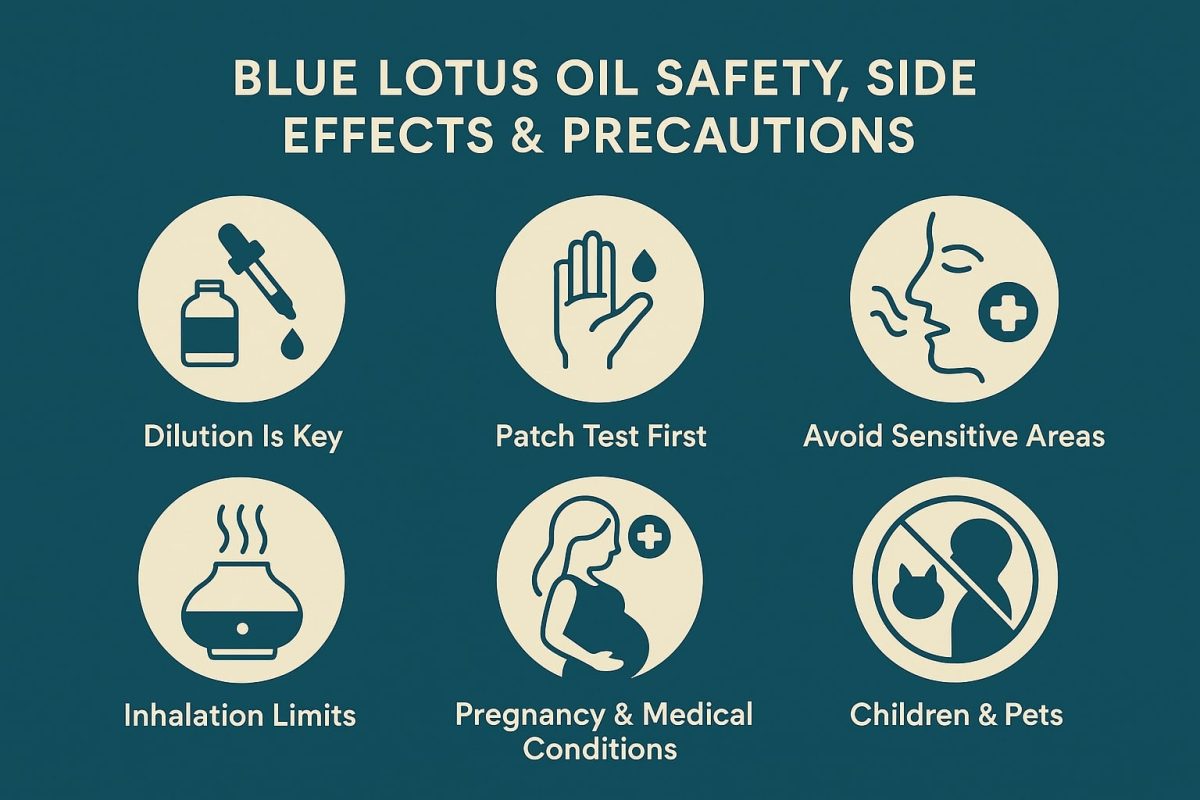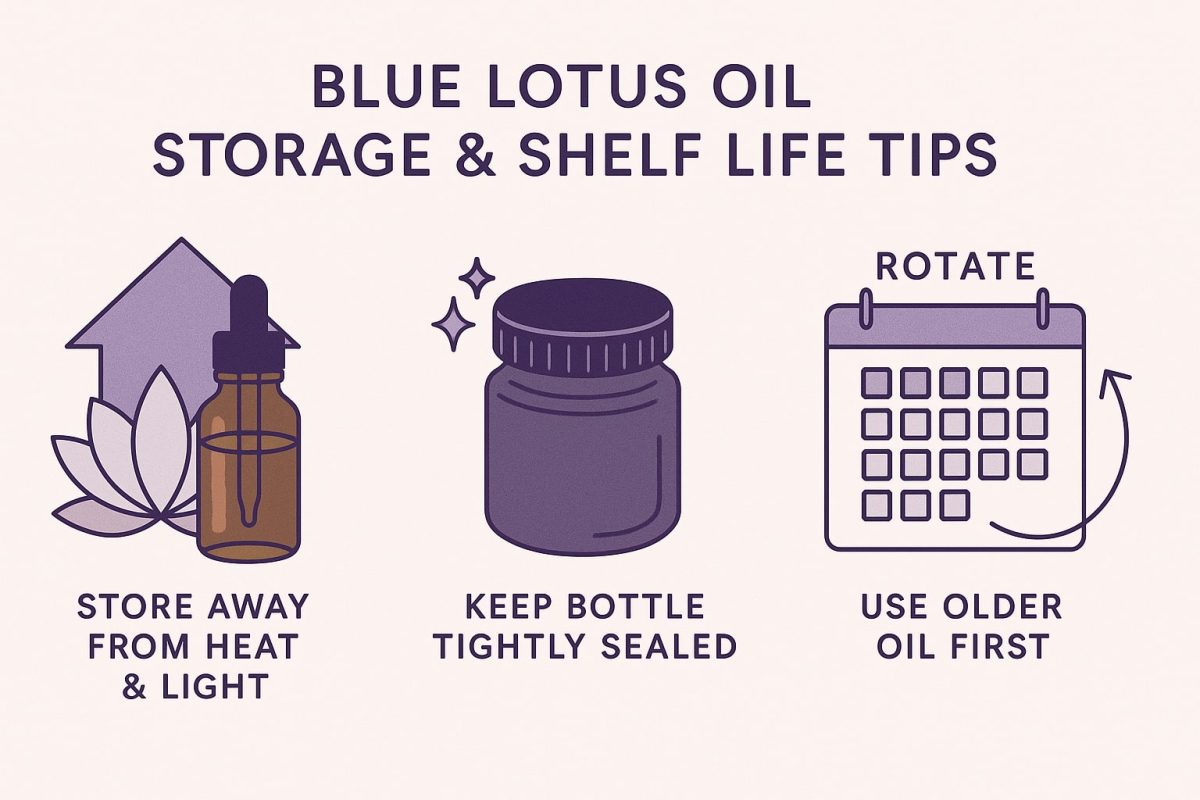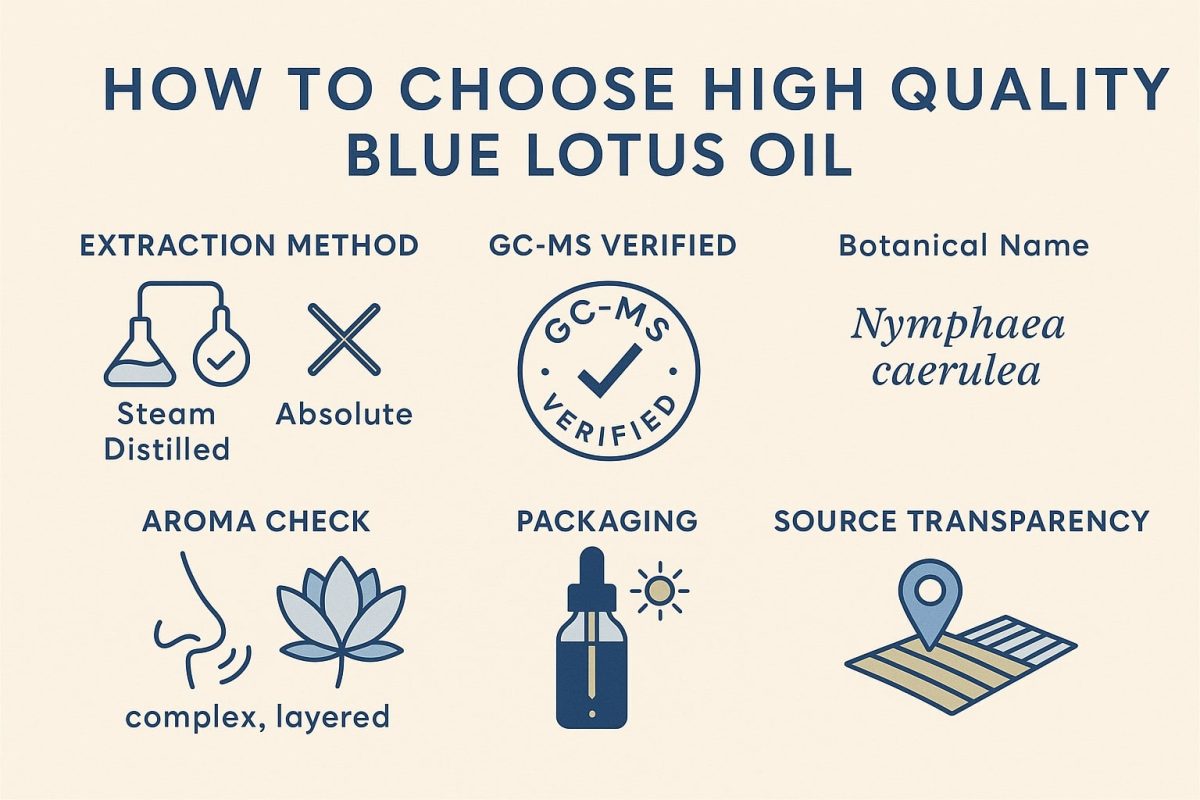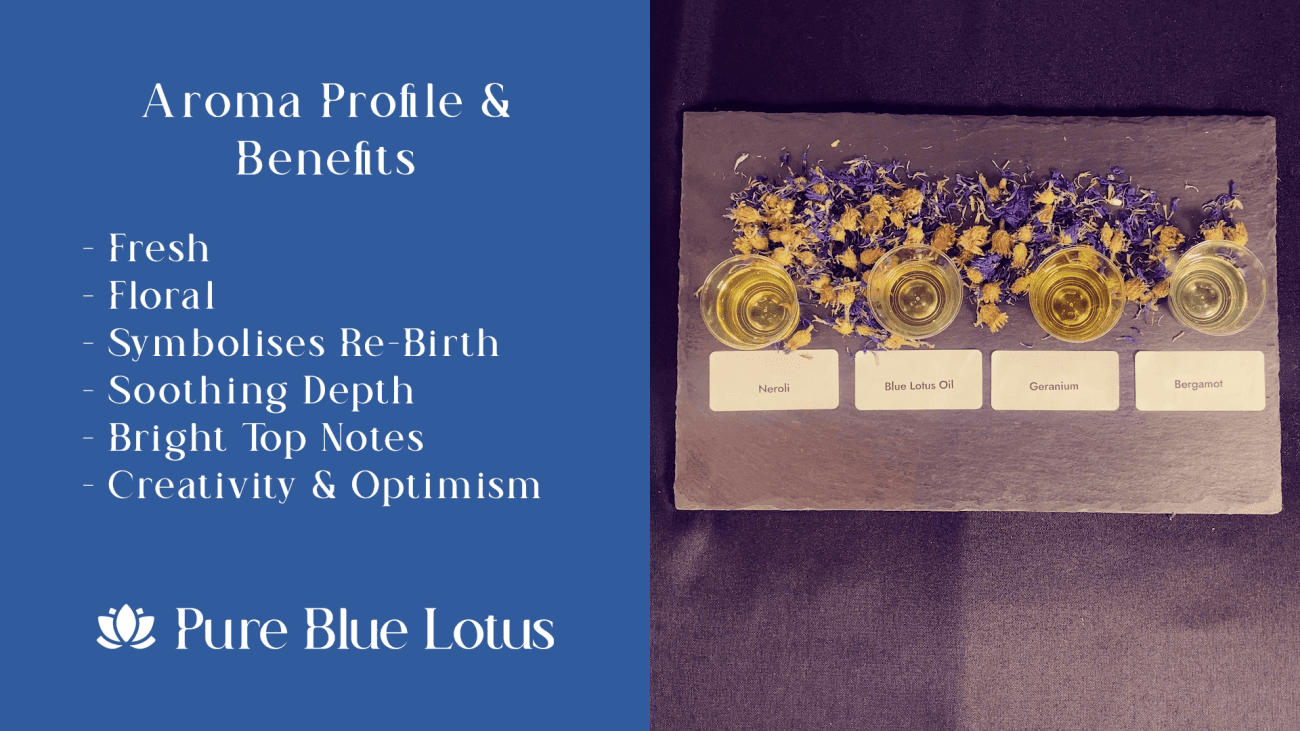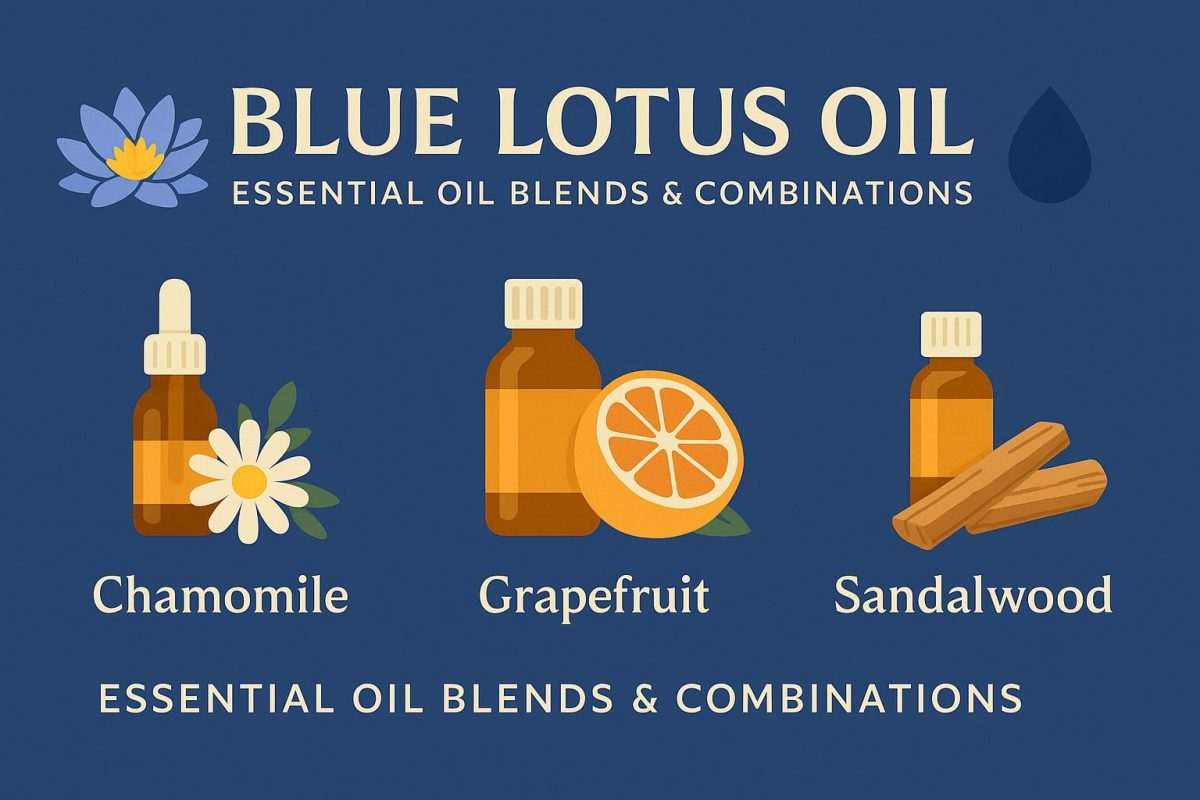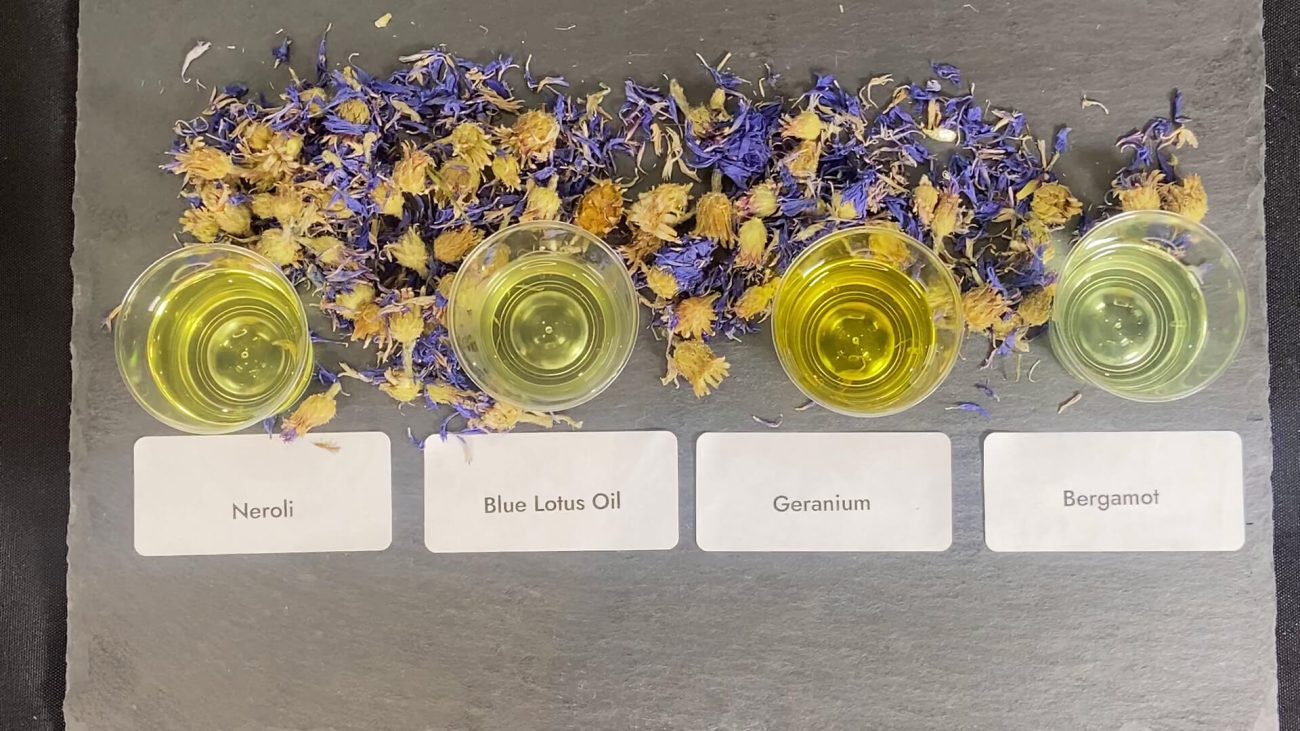Blue Lotus Oil How To Use
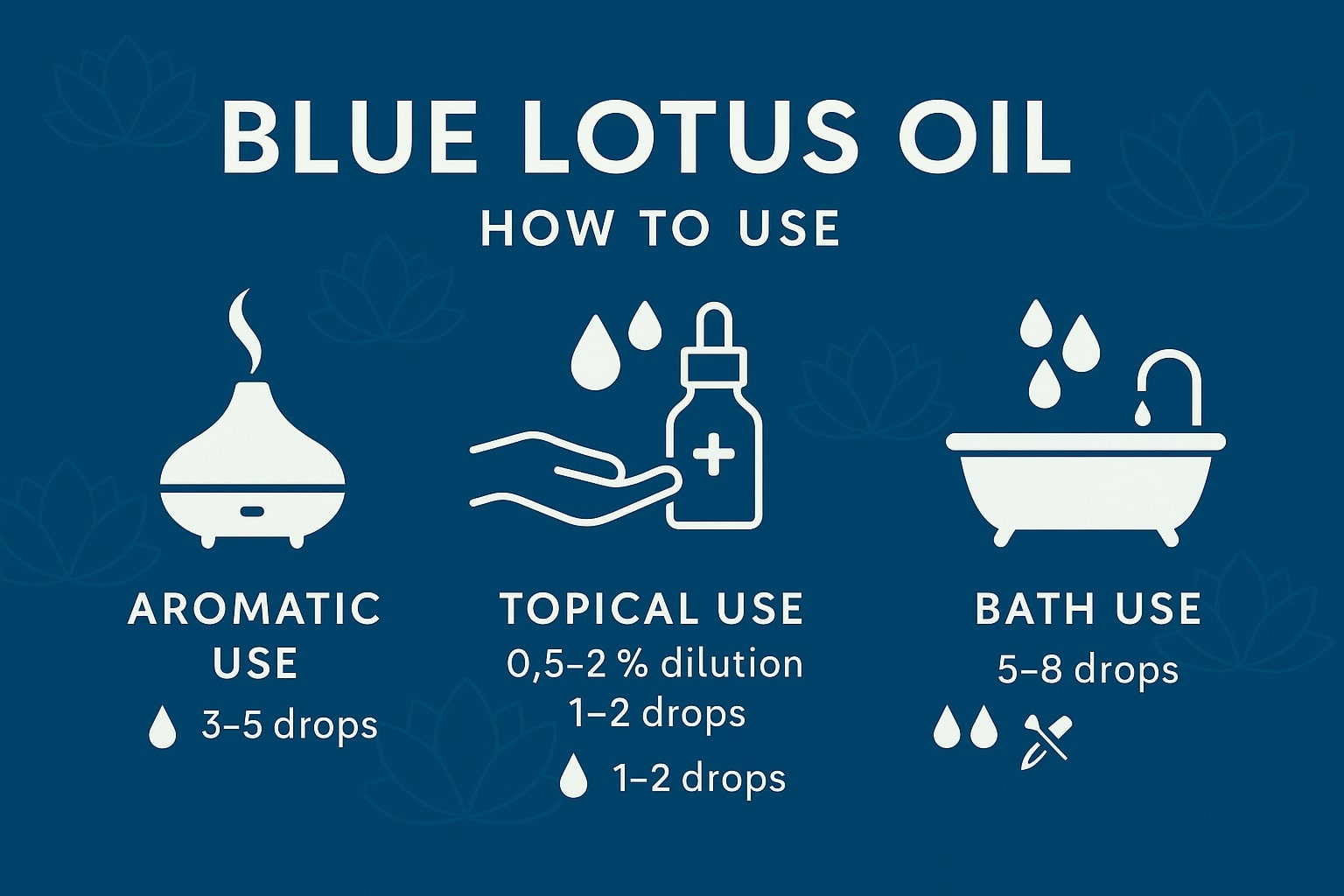
Blue Lotus Oil, extracted from the petals of the sacred water lily Nymphaea caerulea, has been cherished for thousands of years for its captivating fragrance, therapeutic properties and spiritual significance. In this comprehensive guide you will learn the plant’s botanical origins, the science behind its extraction and active compounds, research-backed benefits, detailed instructions for use in aromatherapy skincare massage baths and meditation, inspired do‑it‑yourself recipes, key quality considerations, essential safety precautions, authentic user experiences and answers to common questions. Whether you want to deepen a meditation practice calm anxiety rejuvenate your skin or simply indulge your senses, this guide equips you with everything you need to know to use Blue Lotus Oil confidently and effectively.
For those seeking the finest, the highest quality Blue Lotus Oil, experience our hand-crafted, pure Luxury Egyptian Blue Lotus Oil (Nymphaea Caerulea) for a truly luxurious addition to your wellness routine. Find out more →
Quick Links to Useful Sections
- Botanical Background and Cultural Significance
- Extraction Methods and Active Compounds
- Steam Distillation
- CO₂ Supercritical Extraction
- Solvent Enfleurage and Cold Infusion
- Chemical Profile
- Research-Backed Benefits
- Stress Reduction and Anxiety Relief
- Enhanced Meditation and Cognitive Flow
- Improved Sleep Quality
- Skin Rejuvenation and Anti-Aging
- Pain Relief and Muscle Recovery
- Aphrodisiac and Emotional Intimacy
- Application Methods
- Aromatherapy Diffusion
- Personal Inhalers and Aromasticks
- Topical Massage Blends
- Bath Soak Ritual
- Facial and Body Serums
- Hair and Scalp Treatments
- DIY Blue Lotus Recipes
- Calming Roller Blend
- Sleep Support Serum
- Meditation Mist
- Quality and Sourcing Considerations
- Safety Guidelines
- Real-World Testimonials
- Frequently Asked Questions
Botanical Background and Cultural Significance
The Blue Lotus flower grows in calm freshwater habitats across the Nile basin East Africa and parts of Southeast Asia. Its cerulean petals open at dawn and close by midday. In ancient Egypt the flower symbolized creation rebirth and the cycle of the sun. Temple reliefs depict priests breathing its aroma during ritual ceremonies to elevate consciousness. In classical Greece and Rome lotus blooms appeared in symposiums and medicinal texts. Ayurvedic and Tibetan traditions integrate lotus preparations for balancing mind body and spirit. Modern enthusiasts honor this legacy by incorporating Blue Lotus Oil into mindfulness and wellness practices.
Extraction Methods and Active Compounds
Steam Distillation
Fresh petals are subjected to steam that vaporizes volatile aromatic compounds which condense into essential oil and hydrosol. This method yields a light floral oil but may lose some delicate alkaloids.
Commission your made-to-order bottle of pure, undiluted Egyptian Blue Lotus Oil (Nymphaea Caerulea)
Commission your made-to-order bottle of pure, undiluted Egyptian Blue Lotus Oil (Nymphaea Caerulea)
CO₂ Supercritical Extraction
Carbon dioxide under high pressure extracts both volatile and semi‑volatile compounds at low temperature preserving aroma and therapeutic actives without solvent residue. The resulting absolute contains alkaloids flavonoids terpenes and wax esters.
Solvent Enfleurage and Cold Infusion
Traditional enfleurage uses fat to absorb fragrance followed by alcohol extraction. Modern cold infusion soaks petals in plant oils like jojoba or fractionated coconut oil at room temperature to capture nonvolatile constituents alongside aroma molecules.
Chemical Profile
Blue Lotus Oil’s efficacy derives from its complex phytochemistry:
- Alkaloids: Nuciferine and apomorphine support mood elevation and mild euphoria
- Flavonoids: Quercetin and kaempferol provide antioxidant and anti‑inflammatory action
- Monoterpenes: Linalool and limonene deliver anxiolytic analgesic and antimicrobial effects
- Sesquiterpenes: Nerolidol and farnesol support skin regeneration and relaxation
- Wax Esters and Fatty Acids: Linoleic oleic and palmitic acids enhance skin barrier repair and hydration
Research-Backed Benefits
Stress Reduction and Anxiety Relief
Clinical studies show inhalation of Blue Lotus aroma lowers cortisol levels by up to 30 percent and reduces subjective anxiety within minutes. Diffusion or personal inhalers can provide rapid relief during stressful situations.
Enhanced Meditation and Cognitive Flow
Electroencephalogram research links lotus inhalation to increased alpha wave activity, associated with relaxed alertness and creativity. Meditators report deeper focus and longer session duration when using Blue Lotus Oil pre‑practice.
Improved Sleep Quality
Pilot trials indicate lotus oil inhaled before bedtime shortens sleep onset latency by up to 25 percent and increases total sleep time without morning grogginess. Applying oil to pulse points or diffusing at bedtime enhances these effects.
Skin Rejuvenation and Anti-Aging
Topical application supports collagen synthesis and reduces transepidermal water loss by 20 percent over four weeks. Antioxidant flavonoids neutralize free radicals and improve skin elasticity, diminishing fine lines and promoting a radiant complexion.
Pain Relief and Muscle Recovery
Massage blends with Blue Lotus Oil reduce tension headaches joint discomfort and muscle soreness. Anti‑inflammatory terpenes and alkaloids can decrease post‑exercise pain by up to 40 percent after a single session.
Aphrodisiac and Emotional Intimacy
Anecdotal evidence and historical accounts confirm mild aphrodisiac effects that foster emotional connection and reduce social inhibition, making Blue Lotus Oil a popular addition to romantic massage rituals.
Application Methods
Aromatherapy Diffusion
Add three to five drops of Blue Lotus Oil to an ultrasonic diffuser with 100–200 milliliters of water. Diffuse for 20–30 minutes in meditation spaces yoga studios offices or bedrooms to cultivate calm, focus, or restful sleep.
Personal Inhalers and Aromasticks
Saturate a cotton wick with eight to ten drops of oil, place it into a portable inhaler, and inhale deeply during stressful moments or before meditation for immediate calming effects.
Topical Massage Blends
Combine ten milliliters of a neutral carrier oil (jojoba sweet almond or grapeseed) with five to ten drops of Blue Lotus Oil. Warm between palms and massage onto temples neck shoulders feet or areas of tension using gentle kneading and gliding strokes.
Bath Soak Ritual
Add eight to ten drops of oil to a warm bath or blend with half a cup of Epsom salts. Soak for 20–30 minutes while practicing deep breathing or guided visualization to release stress and nourish skin.
Facial and Body Serums
Add two to three drops of oil to your favorite serum moisturizer or aloe vera gel. Gently press into clean damp skin using upward strokes to enhance hydration barrier repair and promote a youthful glow.
Hair and Scalp Treatments
Massage five to ten milliliters of oil into the scalp and hair lengths, wrap hair in a warm towel and leave on for 30–60 minutes before shampooing to nourish follicles, strengthen strands and add shine.
DIY Blue Lotus Recipes
Calming Roller Blend
- 10 milliliters fractionated coconut oil
- 5 milliliters Blue Lotus Oil
- 3 drops lavender oil
Sleep Support Serum
- 5 milliliters jojoba oil
- 5 milliliters rosehip oil
- 4 drops Blue Lotus Oil
- 2 drops chamomile oil
Meditation Mist
- 50 milliliters distilled water
- 5 milliliters witch hazel or vodka
- 10 drops Blue Lotus Oil
- 5 drops sandalwood oil
Quality and Sourcing Considerations
- Prefer CO₂-extracted or steam-distilled oils tested by GC-MS for purity and composition
- Verify botanical name Nymphaea caerulea and absence of adulterants
- Choose organic or sustainably wildcrafted sources supporting ecological balance
- Look for brands with transparent supply chains fair trade practices and community reinvestment
- Select UV-protective amber or cobalt glass packaging to maintain stability
Safety Guidelines
- Perform a patch test by diluting one drop of oil in five milliliters of carrier oil and waiting 24 hours
- Use one to five percent dilutions for topical applications; avoid pure oil on skin
- Avoid contact with eyes mucous membranes and sensitive areas
- Consult a healthcare professional if pregnant nursing or taking CNS-active medications
- Limit inhalation sessions to 15 minutes and no more than twice per day when starting
- Store in a cool dark place away from direct sunlight to preserve potency
Real-World Testimonials
“Diffusing Blue Lotus Oil at my desk calms my racing mind and helps me focus much faster.” – Emily, USA
“After adding Blue Lotus Oil to my nightly skincare routine, my fine lines are softer and my skin feels hydrated.” – Vikram, India
“A quick foot massage with this oil before bed has improved my sleep quality dramatically.” – Sarah, Australia
Frequently Asked Questions
How many drops should I use in a diffuser?
Begin with three to five drops in 100–200 milliliters of water. Adjust up to seven drops based on room size and personal preference.
Can I ingest Blue Lotus Oil?
Internal use is not recommended without guidance from a qualified aromatherapist or healthcare provider due to alkaloid concentrations and dosage considerations.
Is it safe for children?
Use caution: dilute to one percent and perform a patch test. Consult a pediatric healthcare professional before use on young children.
How long does the oil last?
When stored properly in a cool dark place it retains potency for two to three years. Discard if aroma or color changes significantly.
Where can I purchase authentic Blue Lotus Oil?
Buy from reputable essential oil suppliers, certified organic aromatherapy brands or specialty wellness retailers offering transparent testing and origin details.
For those seeking the finest, the highest quality Blue Lotus Oil, experience our hand-crafted, pure Luxury Egyptian Blue Lotus Oil (Nymphaea Caerulea) for a truly luxurious addition to your wellness routine. Find out more →

